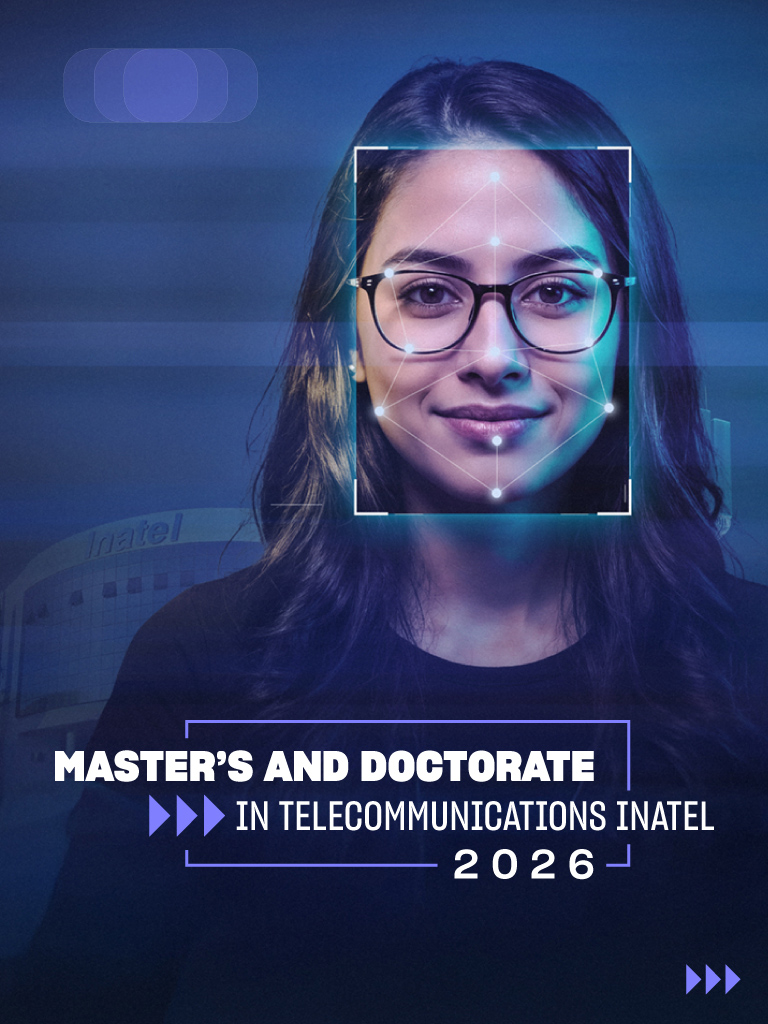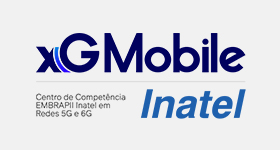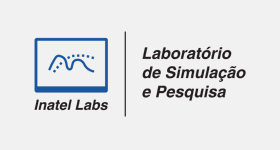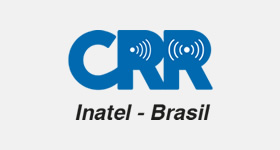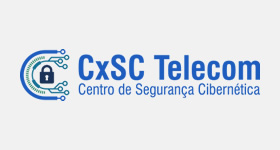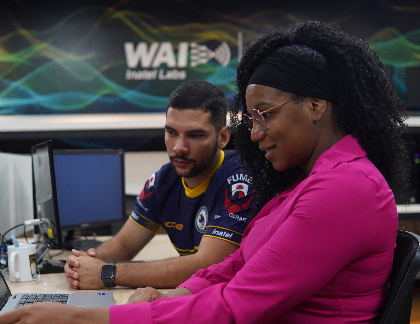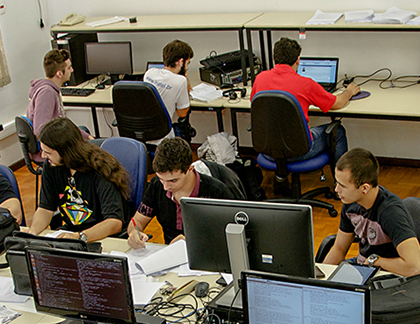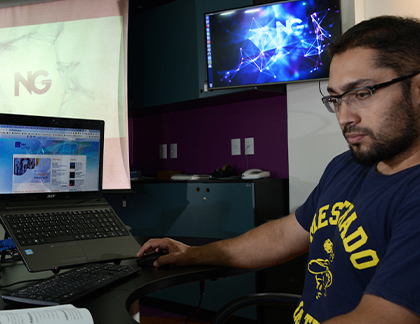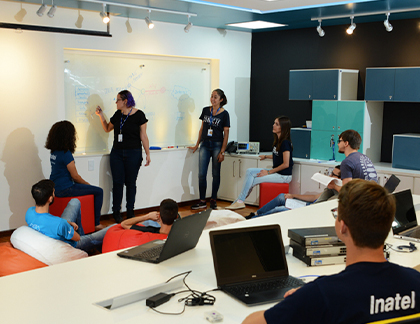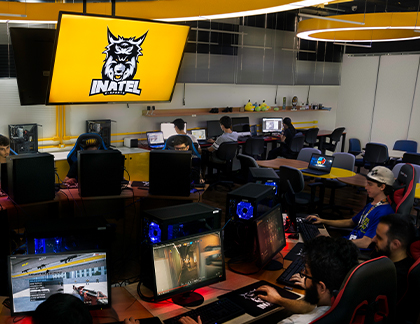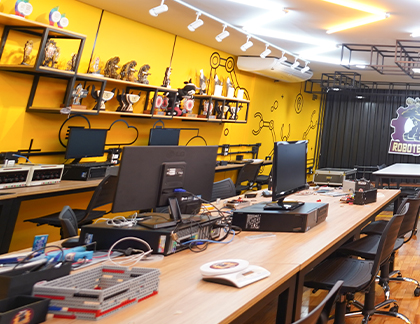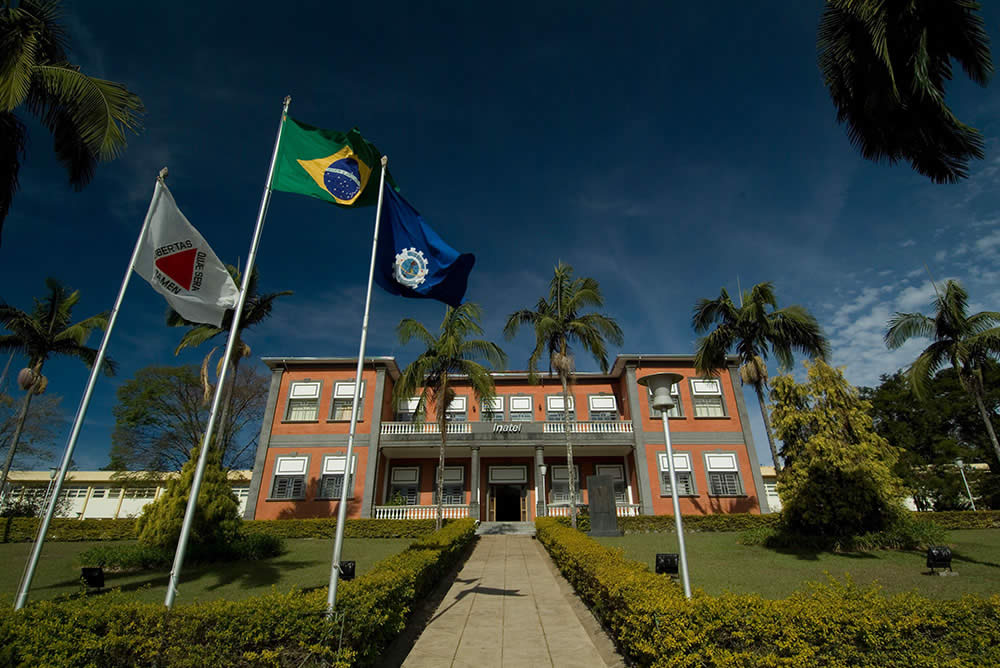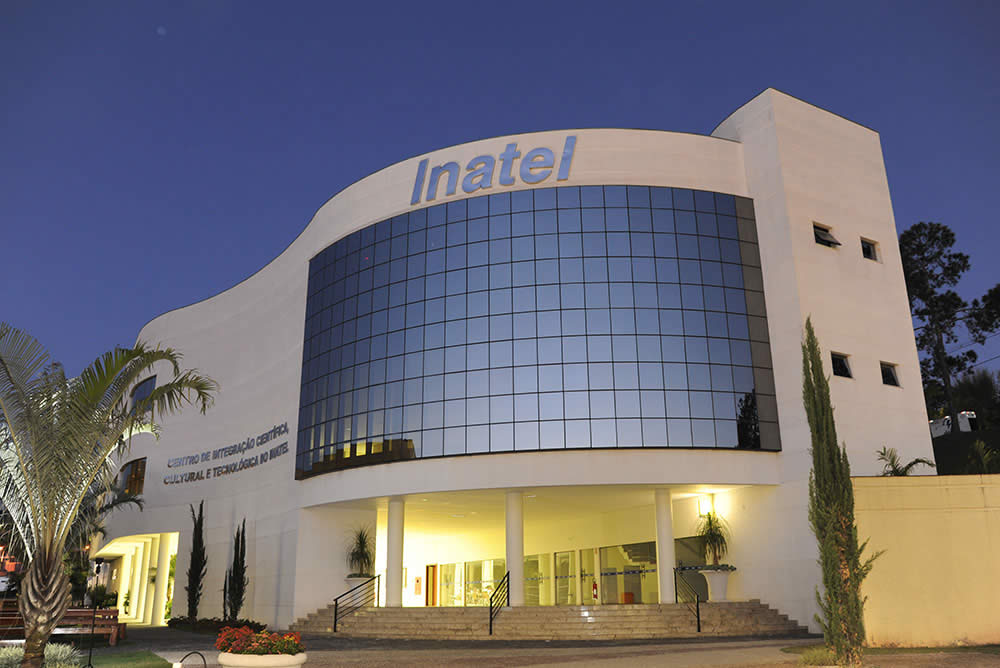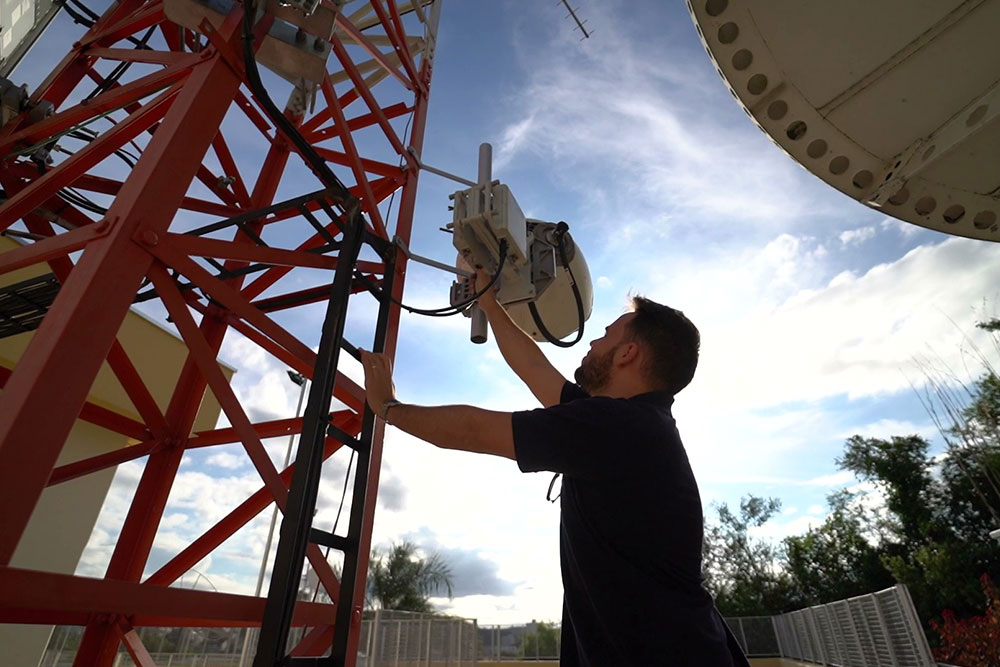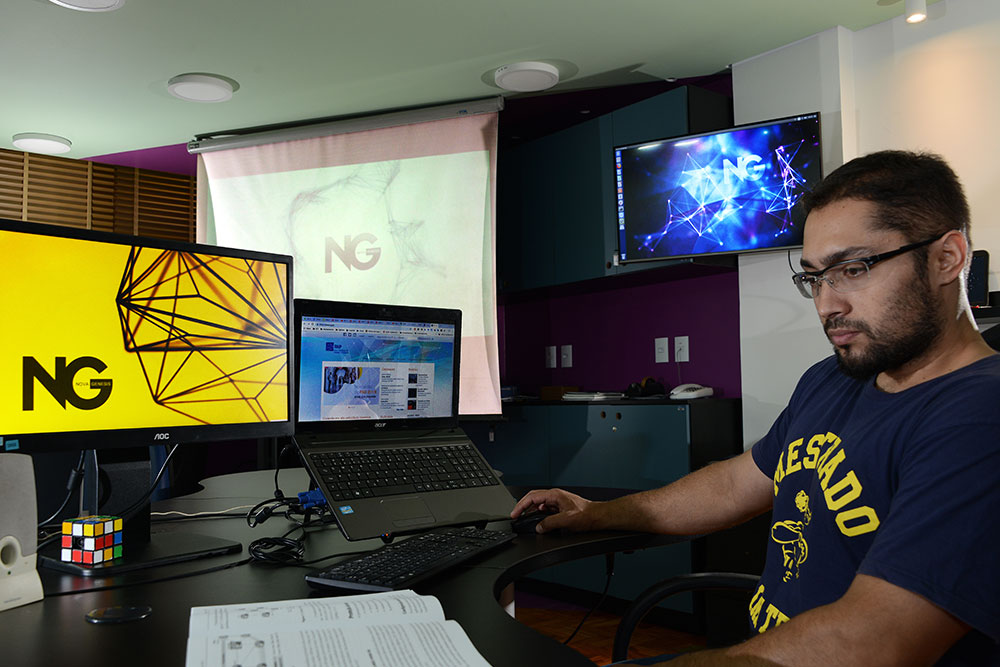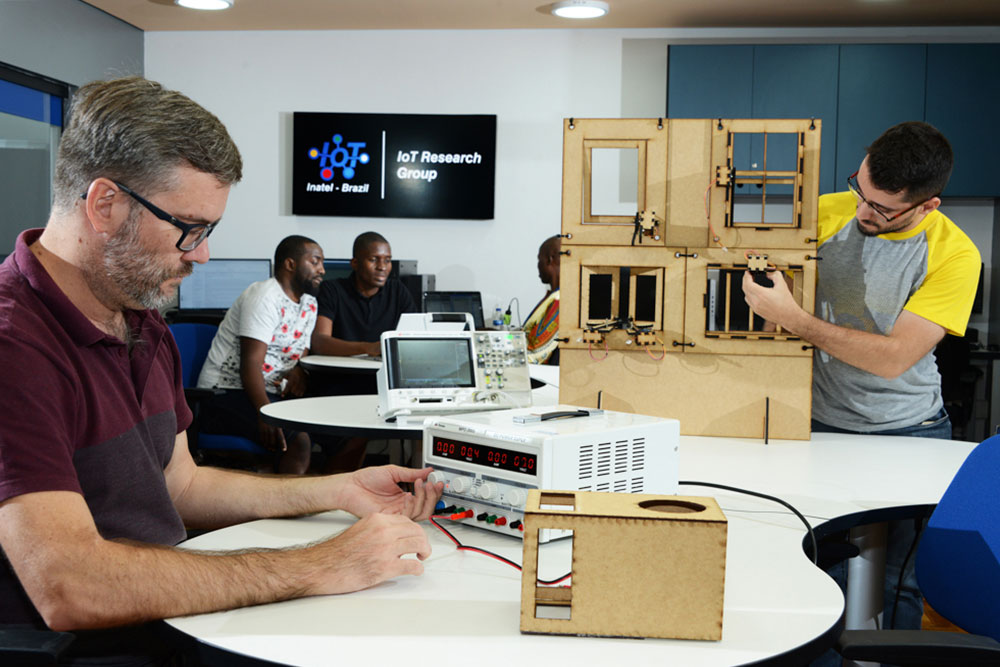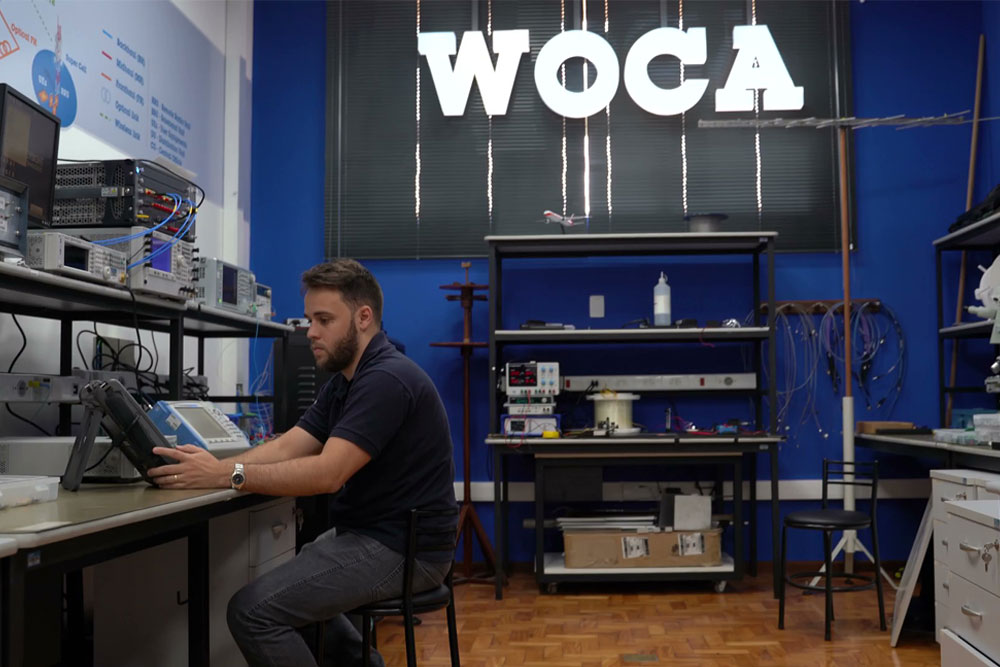Master's and Doctoral

Master's Degree in Telecommunications
For students with strong academic education on themes related to telecommunications fundamentals, holding a degree in courses such as Electrical Engineering, Telecommunication Engineering, Computer Engineering, Computer Science, Information Technology, among others.
-
Highly rated course Capes score 4
-
Innovation Research on 5G and 6G, Future Internet, IoT, and other themes
-
Infrastructure cutting edge laboratories
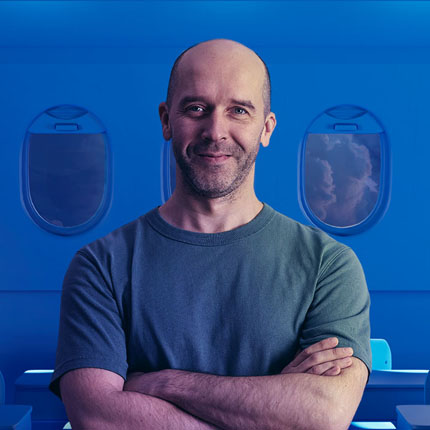
Doctoral Degree in Telecommunications
Aimed at professionals and researchers holding a Master’s degree in Telecommunications or related areas, the Inatel Doctorate Degree strengthens the student’s knowledge and contributes more effectively to the development of information and communication technologies.
-
Research conducted in partnership with the Brazilian Ministry of Science, Technology, and Information (Ministério da Ciência, Tecnologia e Informação — MCTI)
-
Double Degree partnership with top universities in France and Finland
-
Infrastructure cutting edge laboratories
Scholarships
Scholarships for the maintenance of students during their dedication to the Master’s and Doctorate programs.
Capes | Fapemig | CNPq | Fapesp | xGMobile
These are scholarships intended for students regularly enrolled in master's or doctoral programs.
Valores:
- Master's: R$2.100,00 to R$3.500,00*
- Doctorate: R$3.100,00 to R$6.500,00*
FINATEL
Finatel scholarships pay for the master’s and PhD courses tuition fees upon the socioeconomical evaluation of the candidates.
FINATEL ALUMNI
Finatel Alumni scholarships are offered to Inatel alumni, paying for up to 50% of the tuition fees, which can be combined with other scholarships.
FUNDACRED
The Fundacred scholarships allow the candidate to pay for 50% of the tuition fees after achieving the Master’s or PhD degrees at Inatel.
Scholarships for living expenses of students that work on specific research projects.
SEMEAR PROJECT
Those are for students enrolled in the Master’s or PhD programs that are selected to work on the research project.
PARTNER COMPANIES
Several partner companies fund room and board scholarships for Master’s and PhD students that work in specific research throughout the course. The amounts are defined according to each partnership and research objective.
Our Research Areas
Research and development of innovative technologies for telecommunications.
RESEARCH FIELDS
RF and Photonic Devices for Telecommunication:
This area of research aims at conducting State-of-the-Art research for the creation and development of radiofrequency (RF) and photonic devices for telecommunication networks and systems.
Telecommunication Networks and Systems
This area comprises many aspects of telecommunication networks and systems, including: digital transmission techniques, protocols for communication on different layers, network architectures, telecommunication network technologies, and network devices.
RESEARCH AREAS
-
Antennas
-
Network Performance Analysis
-
Optical and Photonic Communication
-
Electromagnetism Applied to Telecommunication
-
Artificial Intelligence and Machine Learning
-
Internet of Things and Sensor Networks
-
Future Internet and Convergent Networks
-
Cognitive Radio and Cognitive Networks
-
Vehicular Networks
-
Cybersecurity
-
Digital Communication Systems
-
5G and 6G Mobile Communication Systems
-
Intelligent surfaces for wireless communication
Research Centers
Research Laboratories
Specialized laboratories for scientific and technological development in the areas of telecommunications, computing, and automation.
Brasil6g
Inatel, with the support of MCTI and RNP, began developing an action plan (framework) for the development of the 6G network in Brazil, giving rise to the Brazil 6G project, whose main objective is to define the necessary steps for the future generation of mobile networks to be able to meet the applications and use cases important for the economic and social development of the country.
xGMobile
The goal of the EMBRAPII Inatel Competence Center in 5G and 6G Networks - xGMobile is to establish itself as a benchmark in research, development, and innovation, focusing on 5G technologies and the exploration and evolution of future 6G networks.
Wireless and Artificial Intelligence Laboratory (WAI Lab)
The Wireless and Artificial Intelligence Laboratory (WAI Lab) has as its main mission to promote significant advances in the areas of artificial intelligence and wireless networks. Our goal is to lead innovative research, developing practical and applicable solutions that contribute to technological progress and add value to various sectors of society.
Simulation and Research Laboratory
It is common for graduate students (Master's and Doctoral level) to simulate telecommunications systems using computers in their research activities, avoiding the need for real equipment for testing, especially since, in most research projects, the systems being researched do not yet exist. The Simulation and Research Laboratory, as the name suggests, is where students can conduct studies and implement computer simulations on systems and subsystems related to their research areas. To this end, the Laboratory has modern computers, simulation and calculation software, and high-speed internet access, all in a pleasant and comfortable environment.
crr - CRR Inatel
Together with the Federal Government, the Center of Reference in Radiocommunications aims to establish mechanisms that allow the country to occupy an important position in the telecommunications segment, researching, evaluating and developing technologies and solutions that meet the demands of Brazilian society and the specificities (demographic, geographic and economic) of the country.
Center for Cybersecurity Research
It is the Inatel cybersecurity research center that encompasses different areas of activity such as education, certification, training, applied research and services related to cybersecurity and related areas, and aims to develop cybersecurity in the context of Brazilian society.
Center for Research in Biomedical Engineering
The eHealth Innovation Center is Inatel's biomedical engineering research center and works on the development of projects involving medical informatics, telemedicine, artificial intelligence, wearable devices, biomaterials, assistive technologies, among other areas of work.
Internet of Things
The group contributes through research, development and innovation in the field of information and communication technologies for the Internet of Things (IoT) and next-generation networks and applications.
The research focuses on the development of new technologies, solutions, and approaches with the aim of providing impactful solutions for the advancement of knowledge, both in industry and society, with a view to technology transfer and innovation.
ANTENNAS AND ANTENNA ARRAY
Team:
- Arismar Cerqueira Sodré Júnior (Project Lead) (Faculty Member – Professor (full))
- Felipe Beltran Mejía (Faculty Member – Professor (full))
- Jorge Ricardo Mejía Salazar (Faculty Member – Professor (full))
- Gustavo Kreuzer Marengo (Master’s Student)
- Hugo Rodrigues Dias Filgueiras (Doctoral Degree Student)
- Lucas de Oliveira Veiga (Master’s Student)
- Luis Gustavo da Silva (Doctoral Degree Student)
- Marcello Caldano de Melo (Master’s Student)
- Tiago Henrique Brandão (Doctoral Degree Student)
Project Description::
The goal of this project is to develop antennas and antenna arrays for several frequency ranges, including millimeter-waves (above 30 GHz) and THz, to fulfill the strict requirements of future fifth generation cellular networks (5G) and sixth generation (6G), and also of radar antennas. The development of the project is carried out in five stages: conception and analytical design; numerical simulation; product engineering; manufacturing; and prototype characterization in a semi-anechoic chamber and in an open field. Reconfigurable antenna arrays can augment the wireless system functionalities, granting flexibility and electromagnetic properties reconfiguration regarding bandwidth, polarization, and radiation pattern. The objective is to propose and manufacture antennas and antenna arrays that are flexible and adaptable, that have high directivity, capable of operating on wide and/or multiple frequency ranges, capable of beam steering, and that can dynamically adapt their radiation pattern. Slotted waveguide antenna arrays (SWAAs) are highlighted here due to their reconfigurability for 5G and 6G networks, since they are capable of beam steering both in the azimuth and the elevation planes. SWAAs will also be used on Multiple-Input Multiple-Output (MIMO) systems at millimeter-wave and THz frequencies. All antennas and antenna array prototypes will be tested in laboratory and on the WWN (WOCA Wireless Network) wireless network, which features links operating at up to 50 GHz throughout the Inatel campus at Santa Rita do Sapucai, Brazil. There are international projects in progress with the University of Surrey (United Kingdom) and the University of Oulu (Finland). We have recently started a collaboration with the Technical University of Eindhoven (The Netherlands). Moreover, several partner companies have been contributing technically and/or financially with the project, such as Embraer, Bradar, Savis, TIM, Keysight, and Anritsu. Solid partnerships with the ESSS-ANSYS and the Altair companies grant us access to electromagnetic simulation software packages, including HFSS and WinProp.
NETWORK ARCHITECTURE AND CONVERGENT NETWORKS
Team:
- Arismar Cerqueira Sodré Júnior (Faculty Member – Professor(full))
- Diego Gabriel Soares Pivoto (Master’s Student)
- Élcio Carlos do Rosário (Master’s Student)
- Epper Bonomo (Master’s Student)
- Everton Silva de Morais (Master’s Student)
- Fábio Carli Rodrigues Teixeira (Master’s Student)
- Fábio Viniccius de Almeida (Master’s Student)
- Jonas Lopes de Villas Boas (Doctoral Degree Student)
- José Domingos Adriano (Master’s Student)
- Luiz Felipe Fernandes de Almeida (Master’s Student)
- Thiago Bueno da Silva (Master’s Student)
- Victor Hugo Domingues Dávila (Master’s Student)
Project Description:
Technological evolution is boosted by the cross-fertilization of technologies. The next generations of communication networks are fed with the best of the existing technologies. The result of this process is the accelerated technological convergence. The creation of the Internet of Things (IoT), of programmable networks, of cloud computing, of time-frequency structures (e.g., OFDM), of spectral sensing, of software-defined radios, of radio over fiber, of cognitive radio, among many other convergent communication technologies, is constantly challenging the existing architectures.
There are hundreds of examples. Recently, the IETF protocol stack is being reinvented to support sensor and actuator devices with energy supply limitations, giving rise to technologies such as 6LoWPAN, RPL, and CoAP. As another example, the architecture of mobile communication networks is also being reinvented to leverage cloud computing, virtual functions, and network programmability. Moreover, new time-frequency structures are emerging to add flexibility and support to contradictory scenarios to 5G, such as high rate content distribution and the Internet of Things scenarios.
Wireless and optical networks convergence creates brand new scenarios, where RF signals are transported to data centers and processed by software-defined radios. Finally, there is also research that tackles the limitations of the current Internet, proposing disruptive architectures for TCP/IP.
Those are the Future Internets, such as the NovaGenesis architecture being developed at Inatel since 2008. To all previously mentioned scenarios there are also: (i) the need to reduce human interference on network operation; (ii) new techniques for content distribution; (iii) opportunistic usage of the radiofrequency spectrum; (iv) adding context to data; (v) the integrated orchestration of resources and services; (vi) security, privacy, and trust; (vii) the representation of physical resources by services and their slicing; (viii) the programmability of physical resources (both for IoT and for 5G and wireless/optical networks); (ix) the devices, services, and data interoperability; (x) the virtualization of physical resources; (xi) convergent multiple access; and (xii) mobility.
In this context, this project aims at the coherent integration of paradigms and technologies to create convergent architectures capable of better leveraging the technological availability and their convergence. The project also aims at exploring, in the best possible manner, existing technologies, creating architectures and convergent networks capable of fulfilling the requirements and emerging complex scenarios needs. Moreover, the project aims at solving problems and limitations of the existing solutions, bringing significant gains. Finally, it aims at proposing brand new architectures and networks.
CONTRIBUTIONS TO THE PHYSICAL AND LINK LAYERS ON TELECOMMUNICATION SYSTEMS
Team:
- Luciano Leonel Mendes (Project Lead) (Faculty Member – Professor(full))
- Dayan Adionel Guimarães (Faculty Member – Professor(full))
- José Marcos Câmara Brito (Faculty Member – Professor(full))
- Rausley Adriano Amaral de Souza (Faculty Member – Professor(full))
- Samuel Baraldi Mafra (Faculty Member – Professor(full))
- Diego Jeldu Cuba Zuniga (Master’s Student)
- Eligario Milton da Costa Semedo (Master’s Student)
- Gabriel Carvalho Mendes (Undergraduate Student)
- Jones Marcio Nambundo (Master’s Student)
- Mariana Baracat de Mello (Doctoral Degree Student)
- Pedro Emilio Gória Silva (Doctoral Degree Student)
- Pedro Henrique Carneiro de Souza (Doctoral Degree Student)
- Thiago Amaral Moreira de Barros (Postdoctoral Researcher)
- Vignon Fidele Adanvo (Master’s Student)
- Wheberth Damascena Dias (Master’s Student)
Project Description:
The fifth generation of mobile communications (5G) is still being conceived to promote a revolution on communications. Several new services should be supported by 5G networks, which means that this new network must be capable of fulfilling a broad set of requirements, most of them conflicting ones. To serve all these demands, it is fundamental for the 5G networks physical layer to be flexible and to adapt to different operation conditions. On the other hand, sixth generation networks (6G) started to attract the attention of the scientific community with the first efforts and research results appearing as soon as of 2019. Even though discussions about these networks are still preliminary, huge technological challenges are foreseen to fulfill the performance requirements that are taking shape. The objective of this project is to present scientific contributions to the development of the physical and link layers of the future mobile networks (5G and 6G), also contributing with innovation in several research fronts, among which the following are highlighted: a. Algorithms for the link layer: on this research front, the main link layer techniques, such as error control, orthogonal and non-orthogonal multiple access, FDD and TDD multiplexing, dynamic resource allocation, and fragmented access to the spectrum will be studied aiming at both the performance analysis and at contributing with improvements for these algorithms. b. New waveforms: the requirements to serve different operation modes of 5G and 6G networks need that the waveforms used on the physical layer to have characteristics that cannot always be complied with by the classical approaches. High spectral efficiency, robustness when facing frequency-selective channels with long delay profiles, low out-of-band emission, and energy savings are some of the challenges that must be considered on the design of waveforms for 5G and 6G networks. c. Channel characterization: estimating statistic channel models is the foundation to estimate the performance of the diverse modulation and channel coding schemes used on communication networks. With the creation of millimeter-wave communication on 5G networks, channel modeling became even more relevant because of the lack of models for frequencies over 20 GHz. For 6G networks, the use of THz communication is expected, also demanding channel modeling for this frequency range. However, it is worth mentioning that this project is not limited to the millimeter-wave and THz cases, also providing relevant results for other frequency ranges when necessary. d. Massive MIMO: the attenuation expected on 5G networks operating at millimeter-waves and on 6G networks operating at THz must be compensated with the efficient use of antenna arrays comprised by a great number of elements. These arrays, when properly excited, can increase the directivity towards the mobile device position, minimizing free space propagation losses. This procedure can also be used to increase the spectral efficiency via space multiplexing and to reduce interference when combined with Cooperative MultiPoint (CoMP) schemes. The research activities within this project scope aim at exploring the complementarity of the contributing researchers’ skills, increasing the synergy of the work surrounding a central theme, which are 5G and 6G networks. Strong multidisciplinary interaction is expected to motivate the development of solutions that are innovative and that are of interest to the scientific community on the mobile communication field.
PHOTONICS-BASED RF DEVICES
Team:
- Arismar Cerqueira Sodré Júnior (Project lead) (Faculty Member – Professor(full))
- Felipe Beltran Mejía (Faculty Member – Professor(full))
- Jorge Ricardo Mejía Salazar (Faculty Member – Professor(full))
- Débora Costanti Justino Ribeiro (Master’s Student)
- Eduardo Saia Lima (Doctoral Degree Student)
- Jéssica Abranches Pinto Ribeiro (Master’s Student)
- Luiz Augusto Melo Pereira (Doctoral Degree Student)
Project Description:
RF devices based on photonic technologies will be applied to 5G and 6G optical-wireless networks, operating on several frequency ranges, including millimetric-waves. The convergence between optical and electrical systems is foreseen, which will take place via the efficient integration of the radiofrequency, optoelectronics, and optical communication technologies. The combined use of these technologies enable innovation on several fields, such as wideband wireless access networks, military applications, satellites, cognitive radio, Internet of Things (IoT), and instrumentation. Experiments for the generation, distribution, processing, amplifying, and detection of RF signals on frequencies of up to 50 GHz are highlights of this project. All photonics-based RF devices prototypes will be laboratory tested and also tested on the WON (WOCA Optical Network) optical network, which is comprised of 726 km of optical fibers, where there are 26 km of fibers deployed on subterranean optical cables at the Inatel campus and 700 km on reels. The WON network is deployed on a ring topology and interconnects the WOCA Laboratory and several other spots on campus, including the antenna park, which is in line of sight with virtually the whole city. There is an international project in progress with the Scuola Superiore Sant’Anna (Italy) and a collaboration has recently started with the Sorbonne Université (France).
PHOTONIC DEVICES
Team:
- Jorge Ricardo Mejía Salazar (Project Lead) (Faculty Member – Professor(full))
- Felipe Beltran Mejía (Faculty Member – Professor(full))
- Eder Gonçalves (Doctoral Degree Student)
- Jhennifer Jaqueline Siqueira (Undergraduate Student)
- Braian Nathan de Oliveira Andrade (Master’s Student)
- Kamilla Rodrigues Cruz (Undergraduate Student)
- Matheus de Souza Magalhães (Undergraduate Student)
- Odair José Picin (Master’s Student)
- William Orivaldo Faria Carvalho (Doctoral Degree Student)
- Willian Azevedo e Paiva Marques (Undergraduate Student)
Project Description:
This project aims at modeling and numerically analyzing photonic devices for telecommunications based on photonic crystals, plasmonic effects, metamaterials, and new materials, including graphene. The objective is to apply photonic crystal-based and plasmonic effect-based devices on sensors, which might be used on the Internet of Things (IoT) field. Conversely, the metamaterial-based and new material-based devices have been applied to Terahertz (THz) systems. The partnership with Philipps-Universität Marburg in Germany has enabled the manufacturing and characterization of splitters and couplers based on dielectric rectangular waveguides, capable of operating on the 120 GHz frequency range.
INTERNET OF THINGS (IoT)
Team:
- Samuel Baraldi Mafra (Project Lead) (Faculty Member – Professor(full))
- Dayan Adionel Guimarães (Faculty Member – Professor(full))
- Luciano Leonel Mendes (Faculty Member – Professor(full))
- Jose Marcos Câmara Brito (Faculty Member – Professor(full))
- Diego Gabriel Soares Pivoto (Master’s Student)
- Diego Jeldu Cuba Zuniga (Master’s Student)
- Eduardo Henrique Teixeira (Master’s Student)
- Elivander Judas Tadeu Pereira (Master’s Student)
- Epper Bonomo (Master’s Student)
- Everton Silva de Morais (Master’s Student)
- Fábio Carli Rodrigues Teixeira (Master’s Student)
- Fabio Viniccius de Almeida (Master’s Student)
- Felipe Pereira Silveira (Undergraduate Student)
- Flavia Larisse da Silva Fernandes (Master’s Student)
- Francine Cassia De Oliveira (Master’s Student)
- Gustavo Felipe Andrade Gomes (Undergraduate Student)
- Gustavo Fernandes Moreira (Undergraduate Student)
- Jonas Vilasboas Moreira (Master’s Student)
- José Domingos Adriano (Master’s Student)
- Kamilla Rodrigues Cruz (Undergraduate Student)
- Marcelo Amorim de Moura Silva (Undergraduate Student)
- Mauro Alexandre Amaro da Cruz (Doctoral Degree Student)
- Mayara de Oliveira Paula (Master’s Student)
- Nicolas Wilson Ribeiro Rocha (Master’s Student)
- Pedro Henrique de Almeida (Undergraduate Student)
- Rita de Cassia Duarte Leles (Master’s Student)
- Thiago Franceli Junqueira de Carvalho (Undergraduate Student)
- Vitor Alexandre Campos Figueiredo (Master’s Student)
- Werner Augusto Almeida Nogueira da Silveira (Master’s Student)
- Willian Azevedo E Paiva Marques (Undergraduate Student)
- Willian Dedonio Moreira Cezar (Undergraduate Student)
Project Description:
The Internet of Things (IoT) is a paradigm comprising devices connected to the Internet and able to interact with each other, promoting a Machine-to-Machine communication scenario. The services enabled by IoT can benefit a plethora of application areas. Among them, precision agriculture, environmental monitoring, infrastructure for smart cities, vehicular communication, and health and public sector services are promising domains for IoT applications. However, IoT presents many challenges to be overcome to provide communication services that are smart and integrated, on large scale, anytime, and anywhere. The technologies used on an IoT solution present specific characteristics regarding limitations, applications, and performance considerations such as throughput, delay, distance, and maximum number of endpoints supported by the network. One of the IoT challenges is related to the devices and network technologies heterogeneity, where each object has different processing and communication technology capabilities. The IoT networks management systems need scalability and standardized communication to achieve secure and precise management on real environments. Middleware solutions are required to guarantee such a heterogeneous network interoperability and ease interaction with users. Moreover, there is a wide scenario for studies to be conducted in the context of IoT applications integrated solutions, especially on verticals prioritized on the Internet of Things Brazilian strategic action plan. According to the Horizontals and Verticals Selection Report, smart applications for urban and rural environments and for healthcare are intended to be the focus. In this regard, the modeling of integrated telecommunication integrated solutions on IoT verticals that are strategic to Brazil will work as a tool for diving in those aspects on matters such as protocols and communication architectures performance evaluation, network management, and the construction of real and laboratory prototypes for evaluation, demonstration, and validation of the proposed solutions. In particular, this project comprises solutions for remote areas considering solutions based on 5G networks.
MOBILE NEXT GENEARTION COMMUNICATION NETWORKS
Team:
- Jose Marcos Câmara Brito (Project Lead) (Faculty Member – Professor(full))
- Arismar Cerqueira Sodré Junior (Faculty Member – Professor(full))
- Dayan Adionel Guimarães (Faculty Member – Professor(full))
- Luciano Leonel Mendes (Faculty Member – Professor(full))
- Rausley Adriano Amaral De Souza (Faculty Member – Professor(full))
- Samuel Baraldi Mafra (Faculty Member – Professor(full))
- Celso Henrique De Souza Lopes (Master’s Student)
- Diego Jeldu Cuba Zuniga (Master’s Student)
- Eduardo Saia Lima (Doctoral Degree Student)
- Egídio Raimundo Neto (Doctoral Degree Student)
- Eligario Milton Da Costa Semedo (Master’s Student)
- Flavia Larisse Da Silva Fernandes (Master’s Student)
- Goergino Da Silva Baltazar (Master’s Student)
- Gustavo Kreuzer Marengo (Master’s Student)
- Hugo Rodrigues Dias Filgueiras (Doctoral Degree Student)
- Jones Marcio Nambundo (Master’s Student)
- Karine De Lourdes Mateus Da Costa (Doctoral Degree Student)
- Lucas De Oliveira Veiga (Master’s Student)
- Luciano Camilo Alexandre (Master’s Student)
- Luis Gustavo Da Silva (Doctoral Degree Student)
- Luiz Augusto Melo Pereira (Doctoral Degree Student)
- Marco Aurelio De Oliveira (Master’s Student)
- Mariana Baracat De Mello (Doctoral Degree Student)
- Mateus Do Prado Capistrano (Master’s Student)
- Nicolas Wilson Ribeiro Rocha (Master’s Student)
- Pedro Henrique Carneiro De Souza (Doctoral Degree Student)
- Pedro Henrique Fialho Santos (Master’s Student)
- Tiago Henrique Brandao (Doctoral Degree Student)
- Tiberio Tavares Rezende (Master’s Student)
- Vignon Fidele Adanvo (Master’s Student)
- Wheberth Damascena Dias (Master’s Student)
Project Description:
The evolution process for the 5th generation mobile communication networks considers, for the first time, other scenarios other than the transmission rate increase and the traffic throughput capacity. There are four scenarios considered for 5G, EMC being the only one currently standardized: a) Enhanced Mobile Communications (EMC) – scenario for which high transmission rate and high throughput capacity are the main requirements. b) Massive Machine Type Communications (MMTC) – scenario that categorizes the Internet of Things (IoT), for which a high device density and high energy efficiency are key matters. c) Tactile Internet – scenario for which very low latency and very high reliability are the main requirements. d) Remote areas access – scenario for which a large coverage range is the main requirement. As it can be seen, the scenarios defined above sometimes require contradictory performance metrics, creating a big challenge for the definition of technologies that enable this network generation to be fully implemented, fulfilling all the scenarios and their respective requirements. On the other hand, research efforts towards the sixth generation networks (6G) have already started, with the first results published in 2019. Even though discussions on those networks are still on a preliminary phase, it is already possible to notice that the performance requirements that are being designed for these networks will result in big technological challenges. Some concepts and technologies that are being considered as trends for 5G and 6G networks are enumerated next, even though not every trend is applicable to all four of the previously defined 5G scenarios or for 6G networks:
- Millimeter-wave transmission;
- THz Transmission (6G);
- Massive MIMO, 3D MIMO, and ultra-massive MIMO (6G);
- Ultra-dense networks;
- Heterogeneous networks;
- Coordinated Multipoint (CoMP);
- Device-to-Device (D2D) communication;
- New waveforms;
- New modulation techniques (6G);
- Non-orthogonal multiple access techniques;
- Cognitive radio;
- Multi-RAT (Radio Access Technologies);
- Full-duplex communication;
- Software Defined Networks (SDNs) and Network Function Virtualization (NFV);
- Cloud Radio Access Network (RAN);
- Radio over fiber;
- Network Slicing;
- Visible light communication (6G);
- Intensive use of artificial intelligence (6G);
- Holographic techniques (6G);
- Quantic communication (6G);
- Blockchain-based solutions (6G);
- Large Intelligent Surface (6G);
- Integration of mobile and satellite communications networks.
The objective of this project is to investigate concepts and techniques related to 5G and 6G network architectures, such as ultra-dense networks, heterogeneous networks, Multi-RAT, SDN, NFV, Cloud RAN, and Network Slicing. Moreover, this project aims at analyzing the impact of the use of the previously defined concepts and technologies on other fundamental aspects for the implementation of a mobile communication network, such as resources management and allocation, signaling protocols and other protocols, carriers aggregation and spectrum allocation, energy efficiency, interference control, and quality of service. The applications of mobile communication networks on the different affected market verticals are also a subject of study of this project. Another objective is to develop performance analysis models that integrate the effects of many concepts and techniques, enabling the assessment of the most relevant aspects for networks, as well as resource optimization strategies to achieve predefined performance metrics.
COGNITIVE RADIO AND NETWORKS
Team:
- Rausley Adriano Amaral De Souza (Project Lead) (Faculty Member – Professor(full))
- Dayan Adionel Guimarães (Faculty Member – Professor(full))
- Jose Marcos Câmara Brito (Faculty Member – Professor(full))
- Samuel Baraldi Mafra (Faculty Member – Professor(full))
- Luciano Leonel Mendes (Faculty Member – Professor(full))
- Caroline Santos Fonseca (Undergraduate Student)
- Elivander Judas Tadeu Pereira (Master’s Student)
- Elvira Salvador Diogo (Master’s Student)
- Gabriel Eduardo Silva Leite (Master’s Student)
- Thiago Alencar Moreira De Bairros (Postdoctoral Researcher)
Project Description:
The demand for new telecommunication services has been the main motivator for research on new technologies, as can be seen, for instance, by the recent advances regarding the 5th generation (5G) of wireless communication systems and the Internet of Things (IoT). However, in order to make new wireless communication services available, the lack of spectral ranges barrier must be overcome since a large number of these ranges would be needed to fit the also large number of transmitters and receivers predicted for 5G networks. This is because, in the current fixed bandwidth allocation policy, the right of use is given only to the contracting user, also known as licensed user or primary user. It may be argued that the fixed spectrum allocation policy might not cope with the expansion of wireless communications services and systems. A new and more suitable dynamic allocation policy needs to be deployed, one that leverages the fact that the radiofrequency spectrum is considerably underutilized, given that most of the time in some areas there are idle allocated spectrum ranges. By the dynamic allocation policy, a non-licensed user, also known as secondary user, is allowed to use a range that is already licensed on the primary network. Secondary users’ transmissions can be carried out both simultaneously with the primary users’ transmissions, as long as they do not cause harmful interference to the latter, or in a non-overlapping manner, leveraging transmission opportunities on licensed ranges that are idle at the moment. In this scenario, the concept of cognitive radio was born — an intelligent transceiver that, via spectral sensing, identifies idle frequency bands for opportunistic use. A cognitive radio has many cognition functions that enables it to adapt to the network environment in which it is deployed, such as spectral analysis and sensing, spectral mobility management, and spectral allocation and sharing. Spectral sensing is one of the main enablers of the cognitive operation. Cognitive networks and radios are foreseen to integrate future 5G networks. The objective of this line of research consists of scientifical research aimed at the proposal of new models, solutions, or existing solution improvements regarding cognitive radio systems and networks on the modern telecommunication systems. In this project, research is conducted on cognitive radio systems (e.g., cooperative and non-cooperative spectral sensing, sensing information decision rules and fusion rules) and on optimizing and processing digital signals (e.g., improvements on the performance of the wireless interface of radiocommunication systems, mainly focusing on spectral sensing). Also, another objective of the project is considering mathematical models for performance analysis, quality of service and resources allocation, in addition to seeking the integration of several aspects related to the cognitive radio networks and cognitive networks, achieving expertise synergy among the professors, students, and researchers working on the project.
Inatel Partner Companies
Inatel develops projects in partnership with several national and international companies.
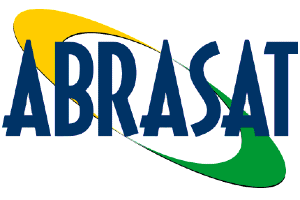
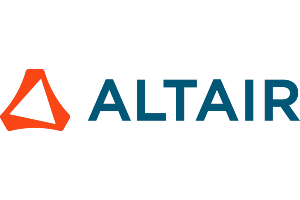

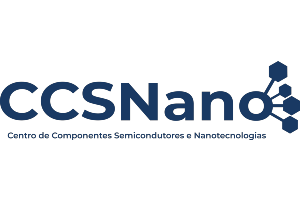

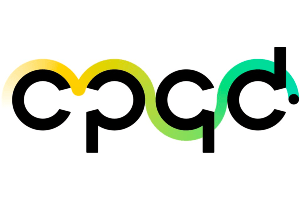


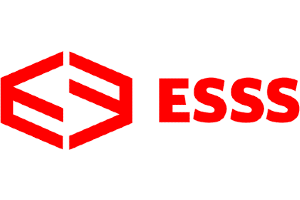



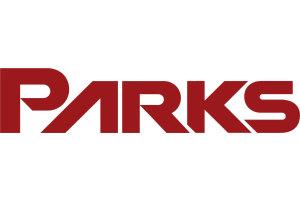

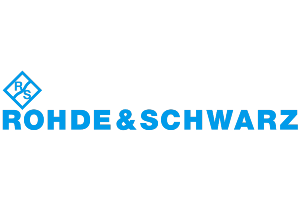
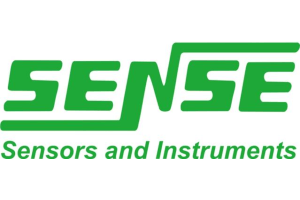



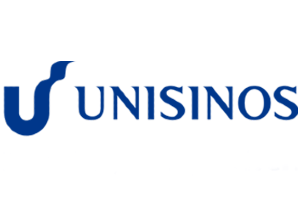
Inatel Partner Universities
Around the world, we have partnerships with reputable universities for cooperation and double degrees.
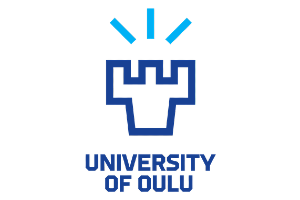
🇫🇮 Finlândia
University of Oulu
Technical and Scientific Cooperation
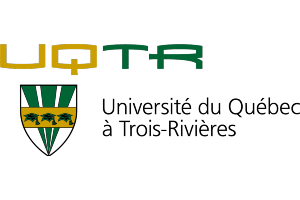
🇨🇦 Canadá
Université du Québec à Troi-Rivières
Technical and Scientific Cooperation
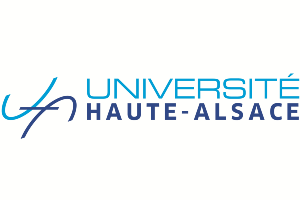
🇫🇷 França
Université Haute-Alsace
Double Doctorate Degree

🇩🇪 Alemanha
Technische Universität Dresden
Technical and Scientific Cooperation
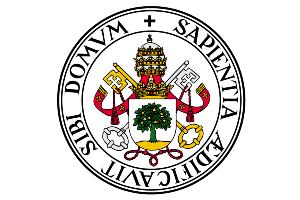
🇪🇸 Espanha
Universidad de Valladolid
Technical and Scientific Cooperation
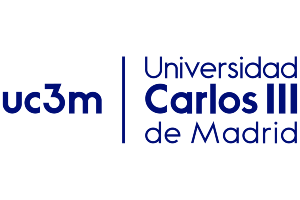
🇪🇸 Espanha
Universidad Carlos III de Madrid
Technical and Scientific Cooperation
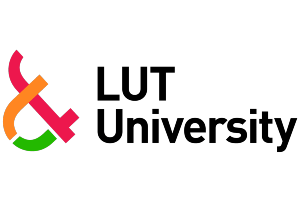
🇫🇮 Finlândia
LUT University
Double Doctorate Degree
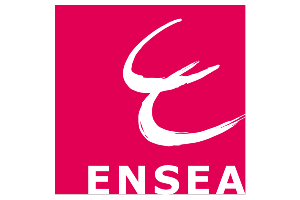
🇫🇷 França
ENSEA
Technical and Scientific Cooperation
Directory
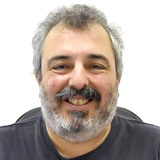
Prof. José Marcos Câmara Brito
Coordenador
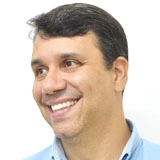
Prof. Arismar Cerqueira Sodré Júnior

Prof. Dayan Adionel Guimarães
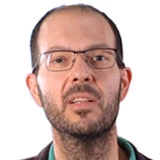
Prof. Felipe Figueiredo
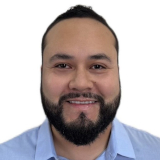
Prof. Fernando Dario Almeida Garcia
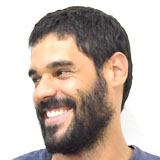
Prof. Guilherme Pedro Aquino
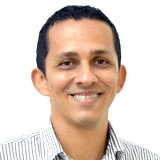
Prof. Jorge Ricardo Mejía Salazar
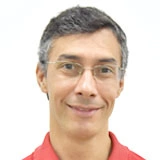
Prof. Luciano Leonel Mendes

Prof. Luiz Augusto Melo Pereira
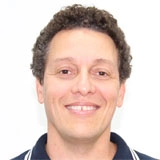
Prof. Rausley Adriano Amaral de Souza
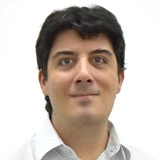
Prof. Samuel Baraldi Mafra
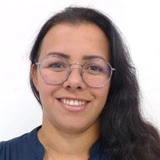
Profa. Victoria Dala Pegorara Souto
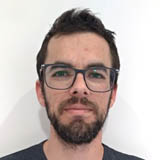
Prof. William Orivaldo Faria Carvalho
Prof. José Marcos Câmara Brito

José Marcos C. Brito received the B. S. degree in electronic and telecommunications engineering from National Institute of Telecommunications (Inatel), Brasil, in 1986 and the M. Sc. and Ph.D. degrees from Campinas University (Unicamp), Brasil, in 1998 and 2003, respectively, both in electrical engineering. He has worked as a professor at Inatel since 1986, since 1990 as a full professor. He has occupied several management positions at Inatel: General Manager of Research & Development Center, Post-Graduation Coordinator, Research & Post-Graduation Director, and General Vice-Director.
Currently, he is the Research & Post-Graduation Director at Inatel, the General Coordinator of Radiocommunication Reference Center at Inatel, the Secretary General of 5G Brazil Project at Telebrasil, the Coordinator of the courses Master’s and Doctorate in Telecommunications at Inatel, and the General Coordinator of Brazil 6G Project. His research & development interests include 5G and 6G networks, telecommunications systems, digital communications, and performance analysis of telecommunications networks.
Prof. Arismar Cerqueira Sodré Júnior

Arismar Cerqueira S. Jr. received his B.Sc. Degree in Electrical Engineering from the Federal University of Bahia-Brazil in 2001, M.Sc. Degree from Unicamp-Brazil in 2002 and Ph.D. degree from Scuola Superiore Sant’Anna-Italy in 2006. He was Invited Researcher and Professor from many world-recognized universities, such as University of Oulu (2017), Scuola Superiore Sant’Anna-Italy (2015, 2017 and 2019), Danish Technical University-Denmark (2013), Max-Planck Institute-Germany (2010) and University of Bath-UK (2004, 2005 and 2007). He was Associate Professor from the State University of Campinas (Unicamp) from March 2009 to August 2011, when he joined the National Institute of Telecommunications (Inatel) from Brazil to work in the same position. Since 2009 he has been acting as a Coordinator of R&D Projects on diverse areas of telecommunications, including Antennas, 5G Networks, Radars and Microwave Photonics. He is a holder of 10 patents, has transferred 25 products to the industry and has published 255 scientific papers. More information can be found at www.scholar.google.com.
Prof. Dayan Adionel Guimarães

Dayan Adionel Guimarães received the Ph.D. degree in Electrical Engineering from the State University of Campinas, Unicamp, Brazil, in 2003. He is currently a Senior Lecturer and Researcher with the National Institute of Telecommunications, Inatel, Brazil. His research interests are fixed and mobile wireless communications, radio propagation, simulation of digital communication systems, dynamic spectrum access, and convex optimization and signal processing applied to communications. For more information, visit www.inatel.br/docentes/dayan/
Prof. Luciano Leonel Mendes

Luciano Leonel Mendes received the BSc. and MSc. in electrical engineering from Inatel, Brazil in 2001 and 2003, respectively. In 2007 he received the Doctor in electrical engineering degree from Unicamp, Brazil. Since 2001 he is a professor at Inatel, Brazil, where he has acted as technical manager of the hardware development laboratory from 2006 to 2012. He has coordinated the Master Program at Inatel and several research projects funded by FAPEMIG, FINEP and BNDES. He was a post-doc visiting researcher, sponsored by CNPq-Brasil, at Vodafone Chair Mobile Communications Systems at the Technical University Dresden from 2013 until 2015. His main area of research is wireless communication and currently he is working on multicarrier modulations for 5G networks and future mobile communications systems.
Prof. Felipe Figueiredo

Felipe A. P. de Figueiredo received the B.S. and M.S. degrees in telecommunications from the Instituto Nacional de Telecomunicações (INATEL), Minas Gerais, Brazil, in 2004 and 2011, respectively. He received the Ph.D. degree from the State University of Campinas (UNICAMP), Brazil, in 2019. He has been working with research and development of telecommunications systems for more than fifteen years. His research interests include digital signal processing, digital communications, mobile communications, MIMO, multicarrier modulations, FPGA development, and machine learning.
Prof. Jorge Ricardo Mejía Salazar

Jorge Ricardo Mejía awarded his PhD in Physics (2014) from the Universidad del Valle, Colombia. He was a postdoc at the Universidade Federal de Alagoas, Brazil, from 2014 to 2016, and at the S\~ao Carlos Institute of Physics 2016-2018, University of S\~ao Paulo. He then joined the National Institute of Telecommunications, Brazil, where he leads the NanoPhotonics group. Jorge is a research productivity fellow from the Brazilian National Council for Scientific and Technological Development (CNPq) and senior researcher from the Colombian Ministry of Science and Technology (Minciencias). Jorge works in a wide variety of fundamental and applied research in electromagnetism, including electromagnetic chirality, gradient optical forces, layered materials, and high-refractive-index nanostructures. The results range from novel theoretical concepts to the design and development of new devices for biosensing, light harvesting, and telecommunications applications.
Profa. Victoria Dala Pegorara Souto

She received the B.Sc. degree in Computer Engineer from the Federal University of Santa Maria, Brazil, in 2014; the M.Sc. degree in Electrical Engineer from the Federal University of Santa Maria, Brazil, in 2016; and the D. Sc. degree in Electrical Engineer from the Federal University of Santa Catarina, Brazil, in 2021. Currently, she is an Assistant Professor and researcher at the National Institute of Telecommunications, Brazil. Her research interests include wireless communications, 5G and 6G cellular systems, mmWave communications, artificial intelligence, intelligent reflecting surfaces, and wireless energy transfer.
Prof. Rausley Adriano Amaral de Souza

Rausley Adriano Amaral de Souza was born in Brazil in 1972. He received the B.S.E.E. and the M.Sc. degrees from the National Institute of Telecommunications, INATEL, in 1994 and 2002, respectively, and the Ph.D. degree from School of Electrical and Computer Engineering of the State University of Campinas, UNICAMP, Brazil. From 1995 to 2001, he worked as a Purchase Manager at Leucotron Equipamentos Ltda. He joined the National Institute of Telecommunication, INATEL, in 2002, where he is a Full Professor. He is presently a Researcher of the CNPq. Since 2015 he has been working at the Radiocommunication Reference Center, whose researches are concentrated on the fifth-generation (5G) systems. He is a Member of the Brazilian Telecommunications Society (SBrT) and is a Member of the IEEE. His general research interests include wireless communications, fading channel modeling and simulation, diversity systems, and spectrum sensing in cognitive radio systems.
Prof. Samuel Baraldi Mafra

Post-Doctorate at the Federal University of Paraná (2015-2018). PhD in Sciences in the area of telecommunications and networks by the Federal Technological University of Paraná (2015). MSc in Electrical Engineering with emphasis on telecommunications from the Federal University of Paraná (2012). Electrical Engineer from the State University of Santa Catarina (2010).
Professor and researcher at the National Institute of Telecommunications - Inatel. He works in the areas of wireless communications, telecommunications networks, internet of things and cognitive radio systems.
Affiliated to the Brazilian Telecommunications Society (SBrT) and member of the IEEE.
Prof. Luiz Augusto Melo Pereira
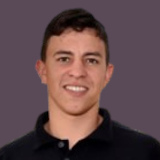
Luiz Augusto Melo Pereira holds a Bachelor's degree (2017), a Master's degree (2020), and a Ph.D. (2023) in Telecommunications from the National Institute of Telecommunications (Inatel). During his Master's and Ph.D. programs, he participated in the Teaching Internship program, teaching subjects such as Stochastic Processes and Digital Communications II for the Telecommunications Engineering course. Since 2024, he has been a professor at Inatel, where he is dedicated to both teaching and research.
From 2022 to 2024, Luiz Augusto served as a Telecommunications Systems Specialist, working on projects in the Wireless and Optical Convergent Access (WOCA) and the Radiocommunication Reference Center (CRR), contributing to innovative projects in wireless and optical networks. He also taught in Lato Sensu postgraduate courses at Inatel. His main areas of expertise include mobile communication systems, artificial intelligence applied to telecommunications, and optical communications.
Prof. William Orivaldo Faria Carvalho

William Orivaldo Faria Carvalho holds Bachelor's (2013), Master's (2018), and Ph.D. (2022) degrees in Telecommunications from the National Institute of Telecommunications (Inatel). He completed postdoctoral research projects at the Federal University of Itajubá (Unifei) in 2023 and at the São Carlos Institute of Physics (IFSC) at the University of São Paulo (USP) in 2024. He has been a professor at Inatel since 2024, engaging in both teaching and research activities. His research interests include applied electromagnetism, with significant contributions to nanophotonics and optical communications. He is recognized for his work across RF, THz, and optical frequencies, encompassing metasurfaces, integrated waveguides, photonics, plasmonics, optical nanoantennas, optical sensing, and magneto-optical effects in photonic nanostructures.
Prof. Fernando Dario Almeida Garcia

Professor Assistente no Instituto Nacional de Telecomunicações (Inatel). É Mestre (2015) e Doutor (2021) em Engenharia Elétrica pela Universidade Estadual de Campinas (Unicamp), com pós-doutorados em Engenharia Elétrica pela Unicamp (2023), Universidade de Harvard (2024) e Inatel (2025). Possui graduação em Engenharia Eletrônica e Telecomunicações pela Universidad de las Fuerzas Armadas ESPE (2012), no Equador. Atuou como pesquisador na Bradar Indústria S.A. e na Embraer Defesa e Segurança, no desenvolvimento de técnicas avançadas de processamento de sinais de radar. É Membro Sênior do IEEE (Institute of Electrical and Electronics Engineers) e contribui ativamente com a comunidade científica como revisor de periódicos de alto impacto e membro de comitês técnicos de programas de conferências e workshops internacionais. É autor de diversas publicações revisadas por pares em periódicos de prestígio e conferências de destaque. Seus interesses de pesquisa incluem teoria da comunicação e da informação, processamento estatístico de sinais, comunicações sem fio, sistemas de radar, modelagem de canais e análise complexa.
Prof. Guilherme Pedro Aquino

Doutor em engenharia elétrica pela Universidade Federal de Itajubá (UNIFEI). Mestre em engenharia de telecomunicações pelo Instituto Nacional de Telecomunicações (Inatel). Atualmente é professor nos cursos de Graduação e Pós-Graduação Lato Sensu no Inatel, nas áreas de redes de telecomunicações, redes TCP/IP, virtualização de sistemas, qualidade de serviço em redes e segurança de redes. É coordenador do Centro de Segurança Cibernética do Inatel (CxSC Telecom) e, também, coordena as ações do Laboratório de Segurança Cibernética e IoT do Inatel (CSI Lab). Atuou como pesquisador no Centro de Referência em Radiocomunicações (CRR), desenvolvendo pesquisas na área de múltiplo acesso não-ortogonal e sistemas eficientes de sensoriamento espectral cooperativo.
INFRASTRUCTURE
Check out some of what we offer for your best performance.
